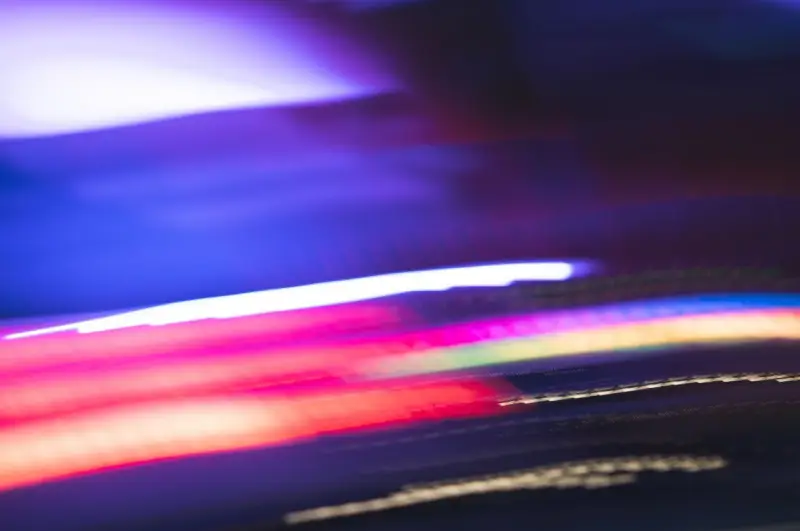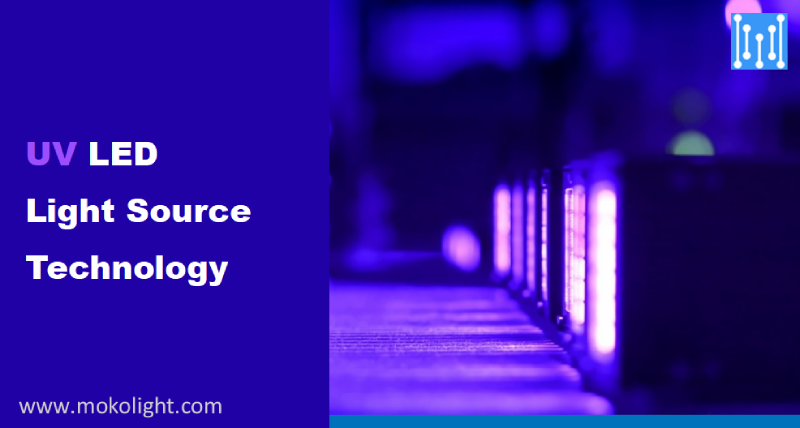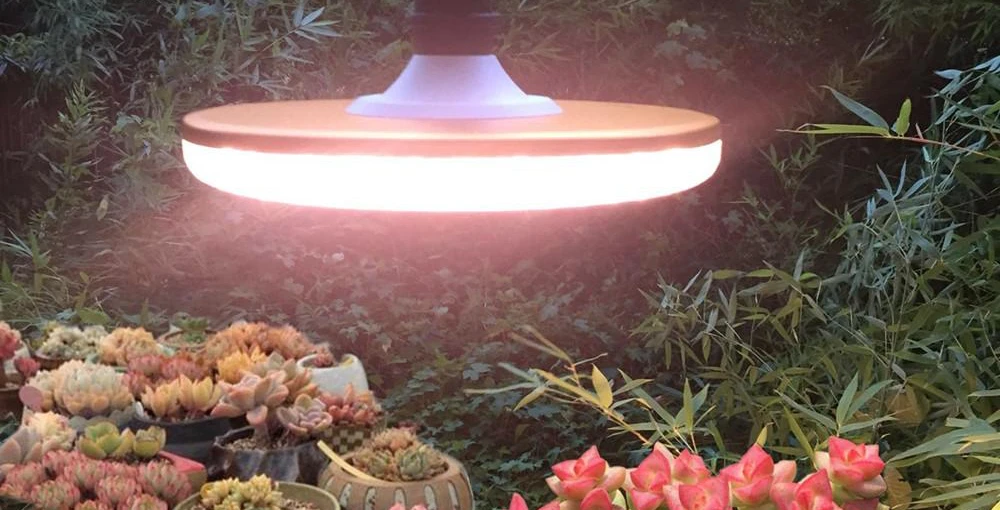LED grow lights have swept the market with the advancement of LED technology, but, have you ever wondered about purple LEDs? In fact, red and blue light cause this color. The post of today is the ultimate guide to red and blue light. Let’s dive into it!
How Do Red and Blue Light Impact Plant Growth?

Blue light plays a significant role during the vegetative stage of plant growth. It encourages the development of roots and contributes to robust and sturdy plant growth. Moreover, blue light regulates the opening of stomata, which are the small pores found on leaves responsible for managing water loss and the absorption of carbon dioxide.
In contrast, red light is particularly effective during the flowering stage. Red light encourages stem growth, fruit production, and blooming.
The question arises: why do we use a combination of red and blue light instead of using just red or blue light?
While red light is highly efficient for photosynthesis, using only red light can result in undesirable plant growth characteristics, such as excessively elongated stems. To maintain compact and typical plant shapes, blue light is added to the light spectrum. However, relying solely on blue light is also harmful to overall plant growth.
Over the years, researchers have discovered that a combination of high red light with a lower percentage of blue light is optimal for greenhouse crop production, particularly when supplemented with natural sunlight. Since there is no universally “perfect spectrum” for greenhouse crops, LED manufacturers typically offer a fixed red-to-blue light ratio that has been identified as the most beneficial for promoting healthy crop growth and maximizing yields.
What Are the Disadvantages of Using Only Red and Blue Light?

Red and blue light may be sufficient for plant growth, but they lack a wider range of energy emitted by sunlight or full-spectrum lights. Initially, it was believed that removing nonessential frequencies would benefit plant health, but it has been found that plants require a full spectrum of light. Although these purple lights may offer slightly better energy efficiency by eliminating the need to power other colors, the energy savings are minimal.
A notable drawback of using red and blue lights is the color itself. The purple light makes it challenging to visually inspect and evaluate plants due to the unusual coloration. Without green light wavelengths to be reflected, plants appear dark purple or even close to black, making it difficult to discern if their color is normal, detect pests, or identify the presence of mildew or diseases. Hence, we recommend top-tier full-spectrum LEDs from MokoLight if you have enough budget.
What Are the Common Types of Red and Blue Light?
Red and Blue Lights: HID
HID (high-intensity discharge) lights used to be highly favored for crop cultivation due to their high intensity. However, these lights do not provide full-spectrum light. To meet the specific needs of plants, HID growers traditionally had to switch between two different bulbs. Metal halide (MH) lights were used during the vegetative stage to emit blue light, while high-pressure sodium (HPS) bulbs were employed during the flowering stage to provide red light.
For many years, this approach has proven effective in promoting robust plant growth and achieving considerable yields. However, with the upheaval of LED technology, blue and red LED lights are rapidly emerging as the preferred choice over MH and HPS bulbs.
Red and Blue Lights: LED
LED grow light technology has undergone significant advancements in recent years, offering the most advantageous features for both plants and gardeners. LED lights now provide equivalent intensity to HID lights while emitting the necessary blue and red light crucial for plant growth. Plus, the benefits of high-quality LED grow lights go beyond this, including:
- Energy efficiency: LED grow lights consume approximately half the energy of HID bulbs, resulting in reduced electricity costs.
- Heat emission: LED lights produce minimal heat, ensuring plant protection and minimizing the need for additional cooling systems, which further saves on energy costs.
- Longevity: LED grow lights have an impressive lifespan of 50,000+ hours with minimal decline in light quality, ensuring durability and longevity.
- Easy installation: LED grow lights require no ballasts or complex installation processes, simplifying setup and maintenance.
- Fexibility: Most LED grow lights are able to switch between blue and red light, allowing a single fixture to cater to different growth stages. This eliminates the need for frequent bulb changes.
- Optimal light spectrum: the appropriate light spectrum that high-quality LED grow lights offer ensures that plants receive the precise wavelengths they need for optimum growth.
What Are the Common Red and Blue Light Ratios?
Succulent Plants at the Growing Stage

People like succulent plants because they possess thick and fleshy water storage organs. Succulent plants, including those from the cactaceae, saccharidae, and sedum families, benefit from primarily receiving red light during their growth phase. Blue light supplementation is also provided. This light combination serves multiple purposes: it promotes the elongation of stems and leaves, enhances chlorophyll and protein synthesis, and contributes to the hypertrophy of succulent stems and leaves, all while preventing excessive vertical growth.
Succulent Plants at the Coloring Stage

This light combination ratio inhibits excessive elongation of the succulents, enhances their freshness and brightness, and spurs the growth of new shoots.
Foliage Plants at the Growing Stage

Foliage plants typically encompass plants with attractive leaf shapes and colors, which include indoor foliage plants like Milan, Aloe, and Asparagus, as well as leafy vegetables like lettuce. During the growth phase of these plants, they require an ample amount of red light for photosynthesis, which stimulates the growth of stems and leaves. Additionally, blue light is necessary to enhance protein synthesis, boost chlorophyll levels, and increase the thickness and brightness of the leaves.
Flowering Plants at the Growing Stage

Flowering plants such as roses, rhododendrons, and others require an adequate supply of red light for photosynthesis during their growth phase. This red light is crucial in promoting the growth of stems and leaves. Additionally, these plants also rely on blue light to support and stimulate the synthesis of chlorophyll and proteins.
Flowering Plants at the Flowering Stage

In the flowering stage, red light plays a crucial role in promoting the production of anthocyanins, enhancing the vividness of flowers, and inducing flower formation. The illumination of red light facilitates the conversion of the photosensitive pigment PR to PFR, which transmits signals for flowering and regulates the flowering cycle.
Fruiting Plants at the Growing Stage

Fruiting plants like strawberries and tomatoes require an adequate supply of red light for photosynthesis, which stimulates the growth of stems and leaves. Additionally, these plants also benefit from blue light, as it assists in the growth of stems and leaves.
Fruiting Plants at the Fruiting Stage

During the fruiting period, fruit plants like strawberries and tomatoes have a higher demand for red light. Red light is essential as it promotes carbohydrate production, resulting in increased fruit yield. Furthermore, red light also plays a vital role in the synthesis of vitamin C and sugars, enhancing the taste of the fruits and increasing their sweetness.
About Us
We recommend The MokoLight LED Grow Light because we have a balanced ratio of light spectra, which is suitable for all stages of a plant’s growth cycle when hung at different heights. With a red-to-blue ratio of Red 36.23% and Blue 19.41%, our full spectrum light offers a well-balanced distribution of wavelengths. What sets our lights apart is that each LED chip contains a mixture of the entire spectrum, ensuring a more uniform distribution of light to the plants. Whether you’re a novice or an expert indoor gardener, MokoLight LEDs are one of the top choices for your crops!
Contact us and you can enjoy the highest quality and the best customer service.




